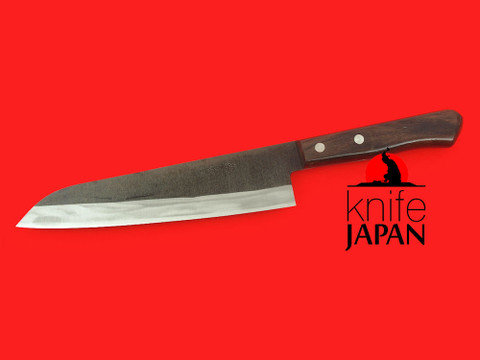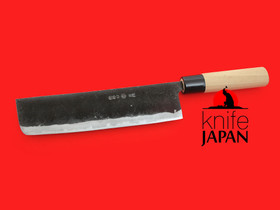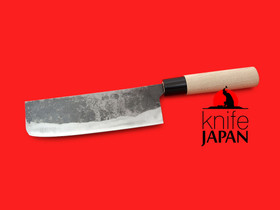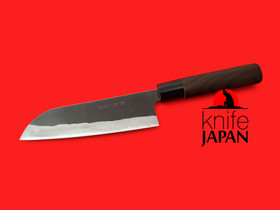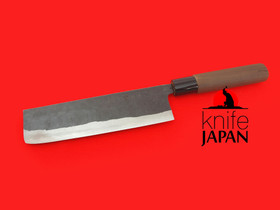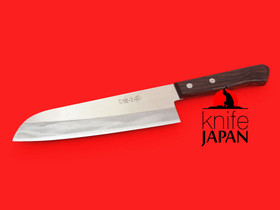Product Description
Sometimes it's hard to know what to call a knife. There are some, like this one, that don't really fit expectations. A nakiri? Really? Well yes. A togari nakiri. A pointy nakiri. We call it a nakiri because it's named for purpose, not for appearance.
Nakiri knives are marked first and foremost by their thin blade, ideal for splitty hard vegetables, root vegetables, onions and rhizomes. Wonderful for leafy vegetables, naturally. We usually expect a nakiri to be 16-18cm in length with a squared end. So at 20cm and pointy this knife is a little unexpected.
So we could have called it a bunka. Or a santoku. A gyuto, at a stretch. But here it is, a togari nakiri.
It follows a western form with a durable walnut half-tang handle fitted for the life of the knife. It feels great! Well-finished with tight fit and seamless feel. You'll see the little dings and knocks imparted during fitting and that's part of the charm - it's a hand made item.
At 135 grams / 4¾ ounces this knife is light compared with most Japanese-style all-rounders at the same length. It has excellent knuckle room, a nice flat profile and in its 7.9" length is a very good choice for preparing no-fuss daily family meals that feature lots of vegetables, including larger cabbage and big bunches the giant chard, spinach and silver beet you'll no doubt grow this year. Or buy. Stainless-clad convenience with unflinching cutting feel.
| Blade steel: | Aogami#2 | stainless |
| Bevel: | Ryoba double bevel |
| Blade construction: | san mai |
| Handle: | Walnut |
| Blade length: | 200mm |
| Overall Length: | 320mm |
| Blade height: | 47mm |
| Blade spine: | 2mm |
| Handle length: | 122mm |
| Handle width: | 24mm (2nd pin) x 15mm |
| Weight in hand: | 135g |

 Loading... Please wait...
Loading... Please wait...











